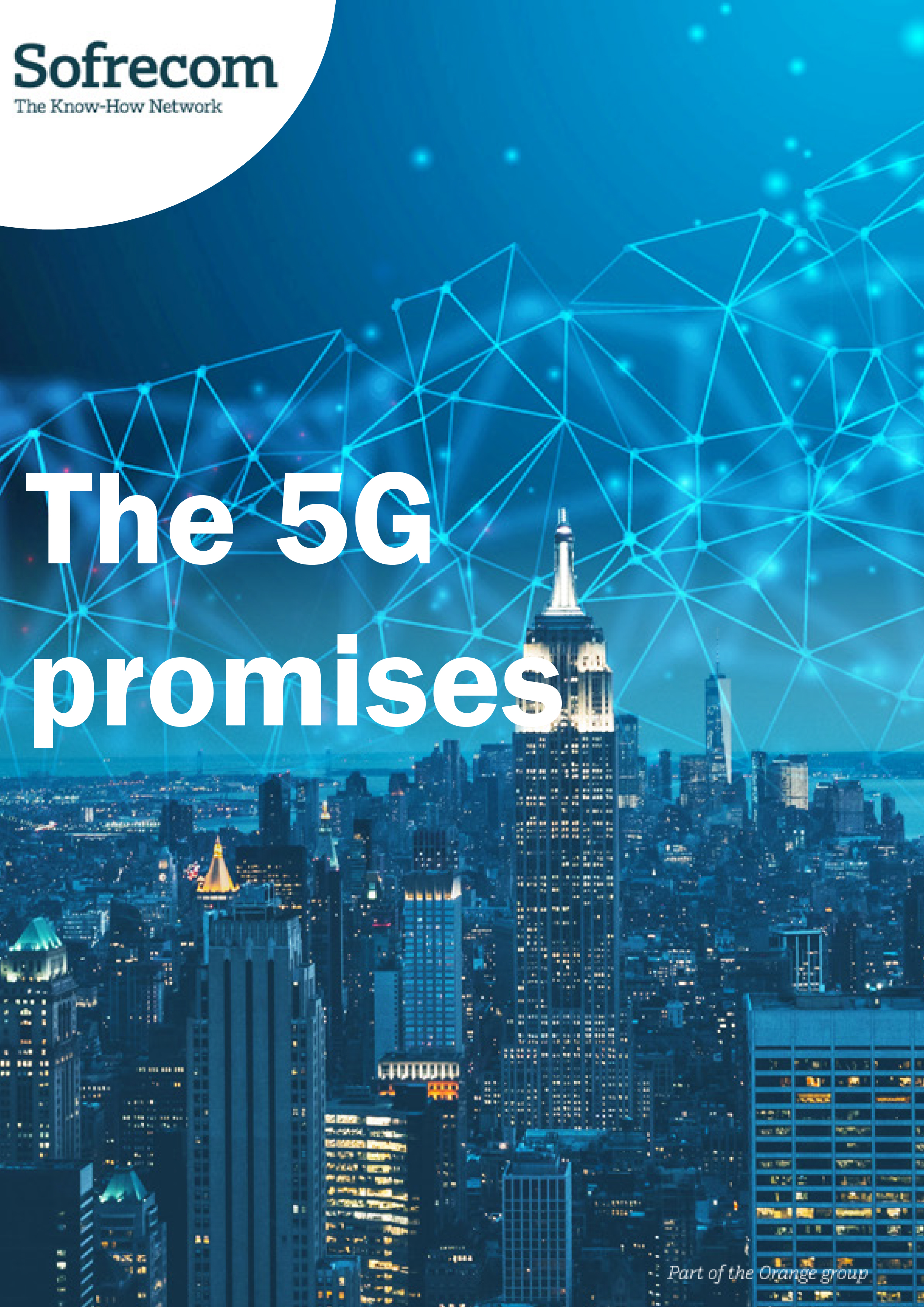
As 5G grows closer, the questions surrounding its potential are multiplying. Yet operators seem wary about the message to send to both customers and manufacturers. Although this new technological gap has a lot in store, most of what makes it revolutionary will target the B2B markets, leaving the consumer market unsure of what to expect.
5G is no revolution in B2C mobile networks but another step towards increased data usage
The arrival of 5G for the B2C segment is considered a true revolution compared to the transition from 3G to 4G. Nevertheless, it is not expected to bring a lot of new features on the table, but rather provide a faster, more uniform user experience. All thanks to a network able to provide up to ten times the theoretical data rate and device density.
Operators will then need to be wary of higher volumes of traffic: global mobile data traffic is expected increase fivefold in 2024, with 25% of the total traffic being carried by 5G networks.
Such a growth in traffic should mean a comparable growth in data usage: as of today, the data usage per smartphone per month is agreed to be around 6 GB in Western Europe, of which 60% come from mobile video. 5G is expected to expand that usage up to 32 GB, with mobile video reaching 74% in 2024 [1].
With these – in our opinion very optimistic- forecasts in mind remains the question for operators of the monetization of such a growth.
5G selling points are somewhat uncertain
Everything that we have been hearing about 5G for the customer market is just enhancements to the current networks: faster network speeds and higher density of devices ensuring a more reliable experience.
But is this sufficient for consumers to be willing to pay a premium for this?
A January 2019 study from GSMA focusing on current consumers’ expectations for 5G [2] revealed that:
- over 50% of consumers in developed countries expect 5G networks to deliver faster speeds
- almost a quarter of respondents do not know what 5G will bring. This insight further reinforces the current lack of focus in operators’ communication.
It is becoming worrying that operators struggle to define how they want to monetize 5G. The most innovative and new use cases (expressed most recently at CES) are centered around Virtual Reality and Augmented Reality. Even though great on paper, most of these technologies’ potential and B2C value (video, AR/VR, music) are held by third parties and very little by telcos. This is one of the core weaknesses of 5G for operators. The outlook on revenue potential from the B2C market appears rather grim.
Could 5G be the end of the Giga war and the beginning of the speed war?
Mobile data monetization will also have to find a new commercial angle besides raising capacity.
Before the potential of 5G emerged, 4G already saw players competing for volume. From 5Go monthly data in they early stages, 30-50Go plans steadily became the norm. Also came players proposing premium, multiple tiered unlimited data plans, well above the most optimistic scenario of usage growth.
This means that operators are in a situation where the present and future consumption needs of their customers are already more than largely met by their current offers. So what is left to monetize on?
One of the answers may be the speed factor. So far, it is the most recognizable expectation for 5G by consumers and maybe the logical step beyond differentiation by volume.
Speed as a differentiating factor has already seen its first trials: for example, Elisa already offers unlimited data and proposes a three-tiered plan, with 4G speeds ranging from 50Mbit/s for low-end offers up to 300Mb/s for high-end ones. This strategy is shared by others such as Swisscom or DNA in Finland.
With that said, marketing speed as a selling point is not without its own issues:
- most mobile users at the moment cannot properly visualize how having 200Mb/s instead of 100 will improve their experience,
- the metric is much less clear than Gigabytes, a metric which consumers are already familiar with,
- Gigabytes consumption is easy to track in real time. And it is an incentive to upgrade when usage grows.
Obviously, telcos will be required to develop proper communication on the value of speed.
In conclusion
While it is obvious that mobile data usage will grow in the coming years, it also seems clear that operators have not yet found how to market it differently than just a marginally better 4G. Consequently consumers are left with vague expectations.
Speed could be one of the paths to 5G monetization. The bottom line for operators is to drive greater awareness among consumers and spread a much more focused message.
Sources:
[1] Ericsson Mobility Report – November 2018
[2] “5G’s Great Expectations” – GSMA – January 2019





